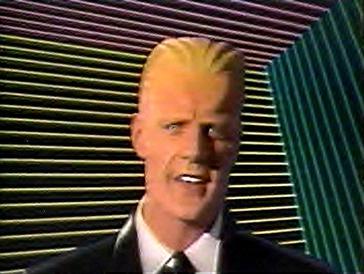In the 1980s, television viewers were introduced to an eccentric, computer-generated character who quickly became an icon of the era. With his distinctive stuttering voice, glitchy appearance, and witty demeanor, Max Headroom captured the imaginations of millions. But who exactly was Max Headroom, and what made him such a fascinating cultural phenomenon? In this article, we will delve into the origins, rise to fame, and enduring legacy of Max Headroom.
Max Headroom made his first appearance in the mid-1980s as a fictional artificial intelligence character in a British television movie. Portrayed by actor Matt Frewer, Max was an embodiment of a digital persona created from the consciousness of reporter Edison Carter, who was injured while investigating a corrupt television network.
Following the success of the TV movie, Max Headroom quickly gained popularity and was subsequently featured in his own television series. Set in a dystopian future, the show depicted Max as a witty and charismatic talk show host who often found himself in bizarre and satirical situations. It offered a sharp critique of media manipulation and the increasing influence of television in society.
Max Headroom’s distinct visual style, combining a computer-generated face superimposed on actor Matt Frewer’s head, along with his glitchy movements and stammering speech patterns, captivated audiences. His unique blend of humor, social commentary, and futuristic aesthetics resonated with viewers, catapulting Max into pop culture stardom. The character’s catchphrase, “Catch the wave,” and his signature stutter became instantly recognizable.
Max Headroom’s popularity extended beyond the small screen. He appeared in various commercials, music videos, and even hosted his own talk show, where he interviewed real-life celebrities. This cross-media presence solidified Max’s status as an iconic figure of the 1980s, blending the boundaries between fiction and reality.
Although Max Headroom’s initial run was relatively short-lived, his impact on popular culture endured. The character paved the way for the use of computer-generated imagery and virtual avatars in television and film, influencing subsequent digital characters in movies such as “Tron” and “The Matrix.” Max Headroom also inspired a generation of artists, musicians, and filmmakers, leaving an indelible mark on the cultural landscape.
In conclusion, Max Headroom, the enigmatic digital personality, captivated audiences during the 1980s with his glitchy appearance, stuttering voice, and witty charm. Through his television series, commercials, and talk shows, Max became a symbol of the era’s fascination with technology, media, and the future. Even decades after his initial debut, Max Headroom’s influence continues to resonate, solidifying his status as an enduring cultural icon and a testament to the imaginative power of blending technology and entertainment.
It is important to note that Max Headroom was not invented by Eminem, as there is no direct connection between the two.
